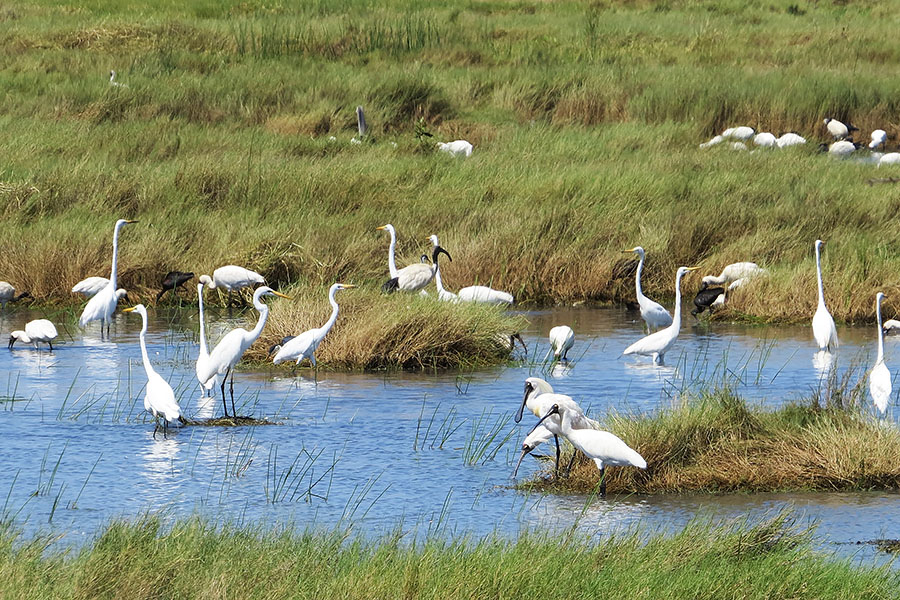|
|
Feeding (management)The feeding requirements of shorebirds and other waterbirds are highly variable, but a critical consideration for wetland managers. There are a number of factors that influence the availability of food resources within a wetland. For example, seasonal variability in water regimes and other longer term climatic patterns. Related links Quick facts
ShorebirdsForeshore management is important for the conservation of shorebirds. Shorebirds feed on macrobenthic invertebrate fauna including polychaete crustaceans, molluscs or insects on intertidal coastal mudflats. On saline or freshwater inland mudflats, diptera (fly) larvae are an important food. Nutrient inputs, sedimentation rates, tidal regimes, periodic flooding and natural habitat mosaics may all contribute to a resilient, productive mudflat that benefits shorebirds. The quality of the mudflat is dependent on maintenance of the broader wetland system and surrounding catchment. Migratory shorebirds may appear to have many choices of where to feed. However, high feeding densities of shorebirds reliably occur in some places and not others but there are knowledge limitations regarding what determines these habitat choices. Some individual shorebirds habitually return to the same feeding site year after year. For some species feeding habitat in central parts of the Flyway is particularly vulnerable[2]. In general the importance of feeding flats is enhanced if the feeding area is larger. The relative density of shorebirds tends to be higher in larger areas e.g. larger than 30 hectares, although there are exceptions, particularly where habitat loss has occurred. Fragmentation of feeding flats should be avoided as it divides larger feeding areas into smaller ones thereby reducing bird numbers. General management principles include:
Other waterbirdsMost, if not all, wetland types support feeding by one or more species of waterbirds, with many providing rich food resources. However, the availability of both water and food resources for waterbirds in Australia can be highly variable and some wetlands may be dry for months or years. Following increases in rainfall or flow, a pulse of biological productivity can occur and food resources can increase. The presence of some types of food, such as fish, in a wetland normally depends on connection to major river systems or the ocean. Fish may not occur in some inland wetlands due to lack of connectivity to a river system, although some systems can be periodically and temporarily restocked during flood events. Water characteristics and quality can influence the occurrence of certain foods types, e.g. only certain aquatic animals can inhabit coastal swamps that are highly acidic. Macroinvertebrates favoured by the pink-eared duck may reach high abundance when salinity of Lake Wyara (Currawinya Lakes Ramsar site) rises to a high but not toxic level. Water with high turbidity, e.g. wetlands of the Channel Country, are not always devoid of food and at times support a large diversity and abundance of waterbirds. High numbers of waterbirds should not necessarily be seen as an indicator of good water quality. For example, sewage treatment ponds commonly support large numbers of ducks and other waterbirds. Additional informationReferences
Last updated: 18 December 2020 This page should be cited as: Department of Environment, Science and Innovation, Queensland (2020) Feeding (management), WetlandInfo website, accessed 8 May 2025. Available at: https://wetlandinfo.des.qld.gov.au/wetlands/management/bird-management/other-waterbirds/feeding.html |

 — Department of the Environment, Tourism, Science and Innovation
— Department of the Environment, Tourism, Science and Innovation


